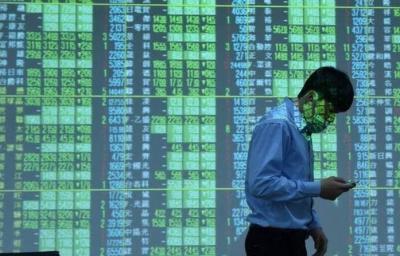Worldwide semiconductor manufacturing equipment billings for the first quarter dropped 19 percent annually amid an industry slump, but Taiwan bucked the downtrend with billings soaring 68 percent year-on-year, international trade group SEMI said yesterday.
Global semiconductor manufacturing equipment billings for the quarter fell to US$13.79 billion, from US$16.99 billion a year earlier, according to data gathered by SEMI and the Semiconductor Equipment Association of Japan from 80 global equipment suppliers.
On a quarterly basis, billings from worldwide semiconductor firms shrank 8 percent from US$14.96 billion, the data showed.
However, billings from Taiwan jumped to US$3.81 billion, compared with US$2.27 billion in the corresponding period last year, SEMI said.
That figure represented a growth of 36 percent from US$2.81 billion of semiconductor equipment shipped to Taiwanese chipmakers a quarter earlier, the data showed.
That made Taiwan the world’s biggest semiconductor equipment spender, surpassing South Korea’s US$2.89 billion.
China ranked third with US$2.36 billion in billings, followed by North America at US$1.67 billion and then Japan, with US$1.55 billion, the data showed.
Taiwan Semiconductor Manufacturing Co (TSMC, 台積電) was the biggest contributor to Taiwan’s billings. The world’s largest contract chipmaker has budgeted record capital spending of between US$10 billion and US$11 billion on new manufacturing equipment for this year.
Most of the spending would go toward advanced technologies, including the 7-nanometer (nm) and next-generation 5nm processes, TSMC has said.
TSMC is expected to be the world’s first chipmaker to offer 5nm technology when the company ramps up production in the first quarter of next year, extending its leadership in offering 7nm technology, it said.
TSMC last week said that it has invested US$50 billion on capacity expansion over the past five years to solidify its technological leadership and fuel revenue growth.
Two weeks ago, North America-based manufacturers of semiconductor equipment reported a 4.7 percent monthly growth in worldwide billings to US$1.91 billion for April, marking the first monthly growth since December last year.
However, SEMI said that it was premature to call the upturn “an inflection point in this cycle.”
The improvement reflected expenditures for advancing technology road maps, it said.
The global semiconductor equipment sector has suffered greatly this year due to the escalating US-China trade dispute, which has led SEMI to predict global semiconductor equipment spending will this year fall 14 percent year-on-year before an estimated 27 percent annual growth next year.
It said the increase could come on the back of favorable Chinese government policies and potential growth from innovative applications in the areas of artificial intelligence, the Internet of Things and automotive electronics.

SELL-OFF: Investors expect tariff-driven volatility as the local boarse reopens today, while analysts say government support and solid fundamentals would steady sentiment Local investors are bracing for a sharp market downturn today as the nation’s financial markets resume trading following a two-day closure for national holidays before the weekend, with sentiment rattled by US President Donald Trump’s sweeping tariff announcement. Trump’s unveiling of new “reciprocal tariffs” on Wednesday triggered a sell-off in global markets, with the FTSE Taiwan Index Futures — a benchmark for Taiwanese equities traded in Singapore — tumbling 9.2 percent over the past two sessions. Meanwhile, the American depositary receipts (ADRs) of Taiwan Semiconductor Manufacturing Co (TSMC, 台積電), the most heavily weighted stock on the TAIEX, plunged 13.8 percent in

A wave of stop-loss selling and panic selling hit Taiwan's stock market at its opening today, with the weighted index plunging 2,086 points — a drop of more than 9.7 percent — marking the largest intraday point and percentage loss on record. The index bottomed out at 19,212.02, while futures were locked limit-down, with more than 1,000 stocks hitting their daily drop limit. Three heavyweight stocks — Taiwan Semiconductor Manufacturing Co (TSMC, 台積電), Hon Hai Precision Industry Co (Foxconn, 鴻海精密) and MediaTek (聯發科) — hit their limit-down prices as soon as the market opened, falling to NT$848 (US$25.54), NT$138.5 and NT$1,295 respectively. TSMC's

In a small town in Paraguay, a showdown is brewing between traditional producers of yerba mate, a bitter herbal tea popular across South America, and miners of a shinier treasure: gold. A rush for the precious metal is pitting mate growers and indigenous groups against the expanding operations of small-scale miners who, until recently, were their neighbors, not nemeses. “They [the miners] have destroyed everything... The canals, springs, swamps,” said Vidal Britez, president of the Yerba Mate Producers’ Association of the town of Paso Yobai, about 210km east of capital Asuncion. “You can see the pollution from the dead fish.

TARIFFS: The global ‘panic atmosphere remains strong,’ and foreign investors have continued to sell their holdings since the start of the year, the Ministry of Finance said The government yesterday authorized the activation of its NT$500 billion (US$15.15 billion) National Stabilization Fund (NSF) to prop up the local stock market after two days of sharp falls in reaction to US President Donald Trump’s new import tariffs. The Ministry of Finance said in a statement after the market close that the steering committee of the fund had been given the go-ahead to intervene in the market to bolster Taiwanese shares in a time of crisis. The fund has been authorized to use its assets “to carry out market stabilization tasks as appropriate to maintain the stability of Taiwan’s